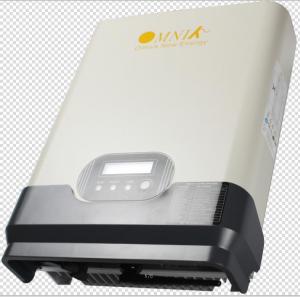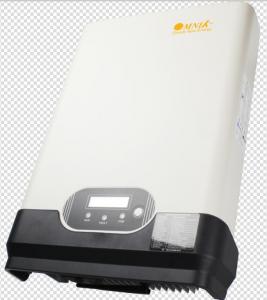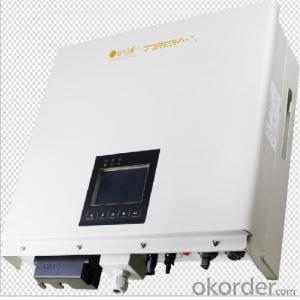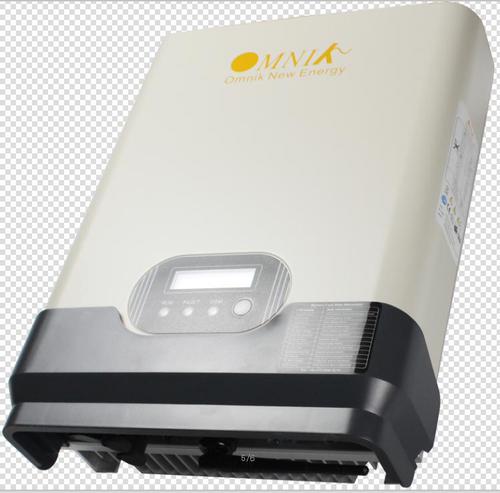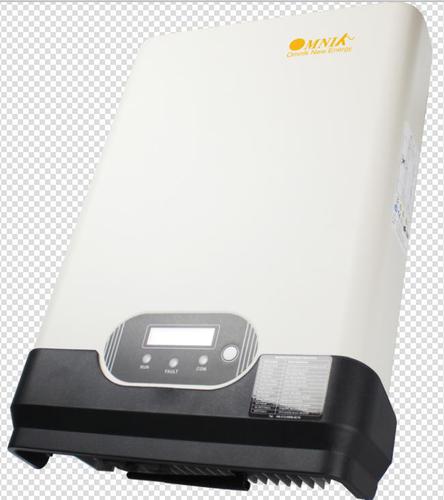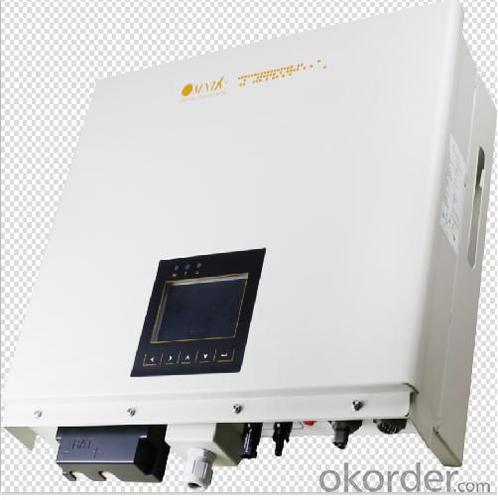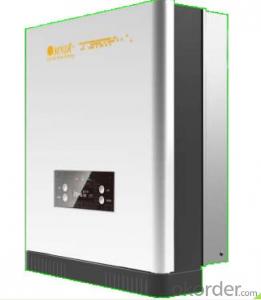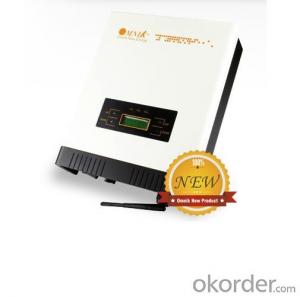on grid solar inverter Omniksol-5.0k-TL Mode
- Loading Port:
- Shanghai
- Payment Terms:
- TT OR LC
- Min Order Qty:
- 10 pc
- Supply Capability:
- 3000 pc/month
OKorder Service Pledge
OKorder Financial Service
You Might Also Like
Omnik new energy solar inverter
Omniksol-2.0k-TL Photon Efficiency up to 3kW
in the world------ Photon tested Jan. 2012.
Omniksol-3k-TL
1.Futures
Transformerless design, high efficiency (Max.97.6%,Euro. 97.0%)
Multi MPPT channels
High MPP tracking accuracy(>99.9%)
Wide DC input range(120-590 Vdc), compatible with different
module technologies
Easy wiring, installating and operating
IP 65 design, suitable for indoor and outdoor installation
5 years warranty(10~25 years as option)
2.technical data:
Type | Omniksol-3.0k-TL | Omniksol-4.0k-TL | Omniksol-5.0k-TL |
Max. PV-Generator Power [W] | 3400 | 4500 | 5000 |
Max. DC voltage [V] | 590 | 590 | 590 |
MPPT DC voltage Range [V] | 150-500 | 150-500 | 150-500 |
Turn off DC voltage [V] | 120 | 120 | 120 |
Max. DC Current [A] | 36 | 36 | 36 |
Nominal DC Current [A] | 28 | 33 | 33 |
Number of DC Connection | 2 | 2 | 2 |
DC-Connection | MC4 | MC4 | MC4 |
Number of MPP trackers Turn on Power [W] | 2 | 2 | 2 |
Turn on power(W) | 10 | 10 | 10 |
3.certificate
EN 61000
VDE 0126-1-1
C10/11
G83/2
UTE C15-712-1
AS4777
CQC
CE10-21
EN50438
4.product outlook
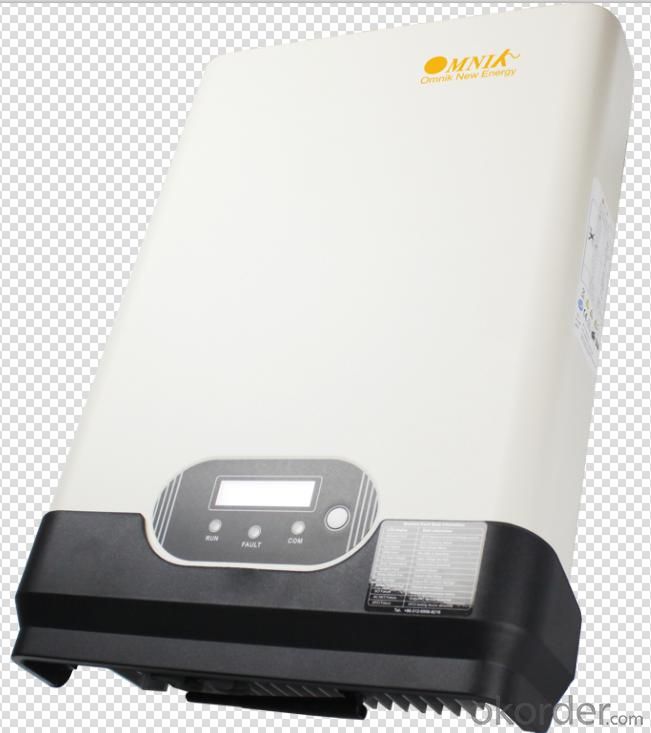
1. How long will my inquiry get response?
Your inquiry related to our products or prices will be replied within 24 hours.
2. Can I get professional service and suggestion?
Well-trained and experienced staffs to answer all your questions in fluent English.
3. Do you accept OEM or customized design?
OEM & ODM, any your customized lightings we can help you to design and put into product.
4. What if I need specific design?
Distributorship are offered for your unique design and some our current models.
- Q: What are the potential risks of short-circuiting a solar inverter?
- Short-circuiting a solar inverter can pose several potential risks. Firstly, it can cause damage to the inverter itself, leading to a significant financial loss as these devices are expensive to repair or replace. Secondly, a short-circuit can result in overheating, which may lead to a fire hazard in the electrical system, putting the safety of the property and individuals at risk. Additionally, a short-circuit can disrupt the flow of electricity from the solar panels, potentially causing a loss of power generation and financial implications for the system owner. Therefore, it is crucial to take necessary precautions and ensure proper installation and maintenance to prevent short-circuiting of solar inverters.
- Q: What is the role of a solar inverter in net metering?
- The role of a solar inverter in net metering is to convert the direct current (DC) electricity generated by solar panels into alternating current (AC) electricity that can be used to power household appliances or fed back into the electric grid. It ensures that the electricity produced by the solar panels is synchronized with the grid's voltage and frequency. Additionally, the solar inverter allows for the measurement and tracking of the energy generated and consumed, enabling accurate net metering calculations and billing.
- Q: Can a solar inverter be used with different battery chemistries?
- Yes, a solar inverter can be used with different battery chemistries as long as the inverter is compatible with the specific battery chemistry and its voltage requirements. However, it is important to ensure that the inverter is designed to work efficiently with the particular battery chemistry to avoid any compatibility issues or potential damage to the system.
- Q: What is the role of a solar inverter in a community solar project?
- The role of a solar inverter in a community solar project is to convert the direct current (DC) electricity generated by the solar panels into alternating current (AC) electricity that can be used to power homes and businesses. It also ensures that the electricity is synchronized with the utility grid and optimizes the efficiency of the solar power system.
- Q: What are the methods of photovoltaic grid-connected inverter control
- and can set the dead time between the upper and lower arms, the use of INTEL 80C196MC to achieve sine wave output circuit, 80C196MC to complete the sine wave signal, AC output voltage, to achieve regulation. Circuit output generally use LC circuit filter high frequency wave, get pure sine wave.
- Q: What is the role of a solar inverter in preventing underperformance?
- The role of a solar inverter in preventing underperformance is to convert the direct current (DC) produced by solar panels into alternating current (AC) that can be used by electrical appliances. By efficiently converting and optimizing the power output from the solar panels, the inverter ensures that the system operates at its maximum capacity, minimizing any potential underperformance issues due to factors such as shading, temperature fluctuations, or system faults. Additionally, advanced inverters can monitor and analyze the performance of the solar system, detecting any abnormalities or inefficiencies that may lead to underperformance and allowing for timely troubleshooting and maintenance.
- Q: How does a solar inverter handle shade on solar panels?
- A solar inverter handles shade on solar panels by employing a technology called Maximum Power Point Tracking (MPPT). MPPT allows the inverter to constantly monitor the output of each individual solar panel and adjust the voltage and current to maximize the power output. When shade is present on one or more panels, the inverter can dynamically optimize the power generation by bypassing the shaded panels or reducing their impact on the overall system performance.
- Q: What is the role of maximum power control in a solar inverter?
- The role of maximum power control in a solar inverter is to optimize the performance and efficiency of the solar PV system. It ensures that the solar panels are operating at their maximum power point, allowing them to generate the highest possible amount of electricity from the available sunlight. This control mechanism adjusts the voltage and current levels to match the load requirements, enabling the inverter to deliver the maximum power output to the grid or connected devices. By actively managing and regulating the power flow, maximum power control helps to maximize the overall energy production and utilization of the solar installation.
- Q: Can a solar inverter be used with different types of solar panel mounting systems?
- Yes, a solar inverter can be used with different types of solar panel mounting systems. The function of a solar inverter is to convert the direct current (DC) produced by solar panels into alternating current (AC) that can be used to power household appliances or fed into the grid. The compatibility of the inverter with different mounting systems depends on the electrical specifications and requirements of the panels and the inverter. As long as the electrical connections and voltage requirements are met, a solar inverter can be used with various types of solar panel mounting systems such as roof-mounted, ground-mounted, or pole-mounted systems.
- Q: What are the advantages of using a transformerless solar inverter?
- One advantage of using a transformerless solar inverter is increased efficiency. Transformerless inverters have a higher efficiency rating compared to inverters with transformers, which means more of the solar energy is converted into usable electricity. Additionally, transformerless inverters are lighter and more compact, making them easier to install and transport. They also tend to have a longer lifespan and require less maintenance compared to inverters with transformers.
Send your message to us
on grid solar inverter Omniksol-5.0k-TL Mode
- Loading Port:
- Shanghai
- Payment Terms:
- TT OR LC
- Min Order Qty:
- 10 pc
- Supply Capability:
- 3000 pc/month
OKorder Service Pledge
OKorder Financial Service
Similar products
Hot products
Hot Searches
Related keywords
